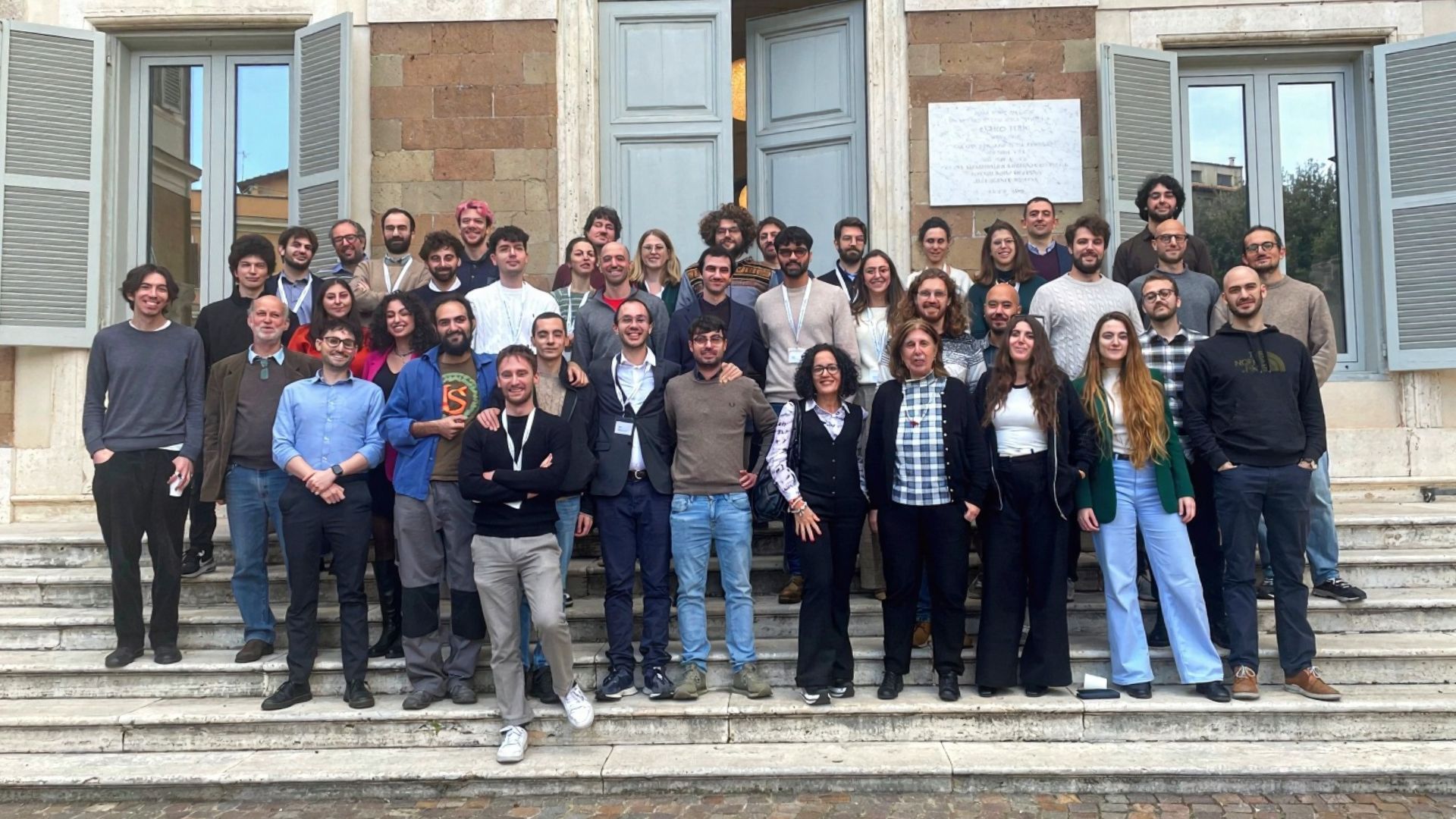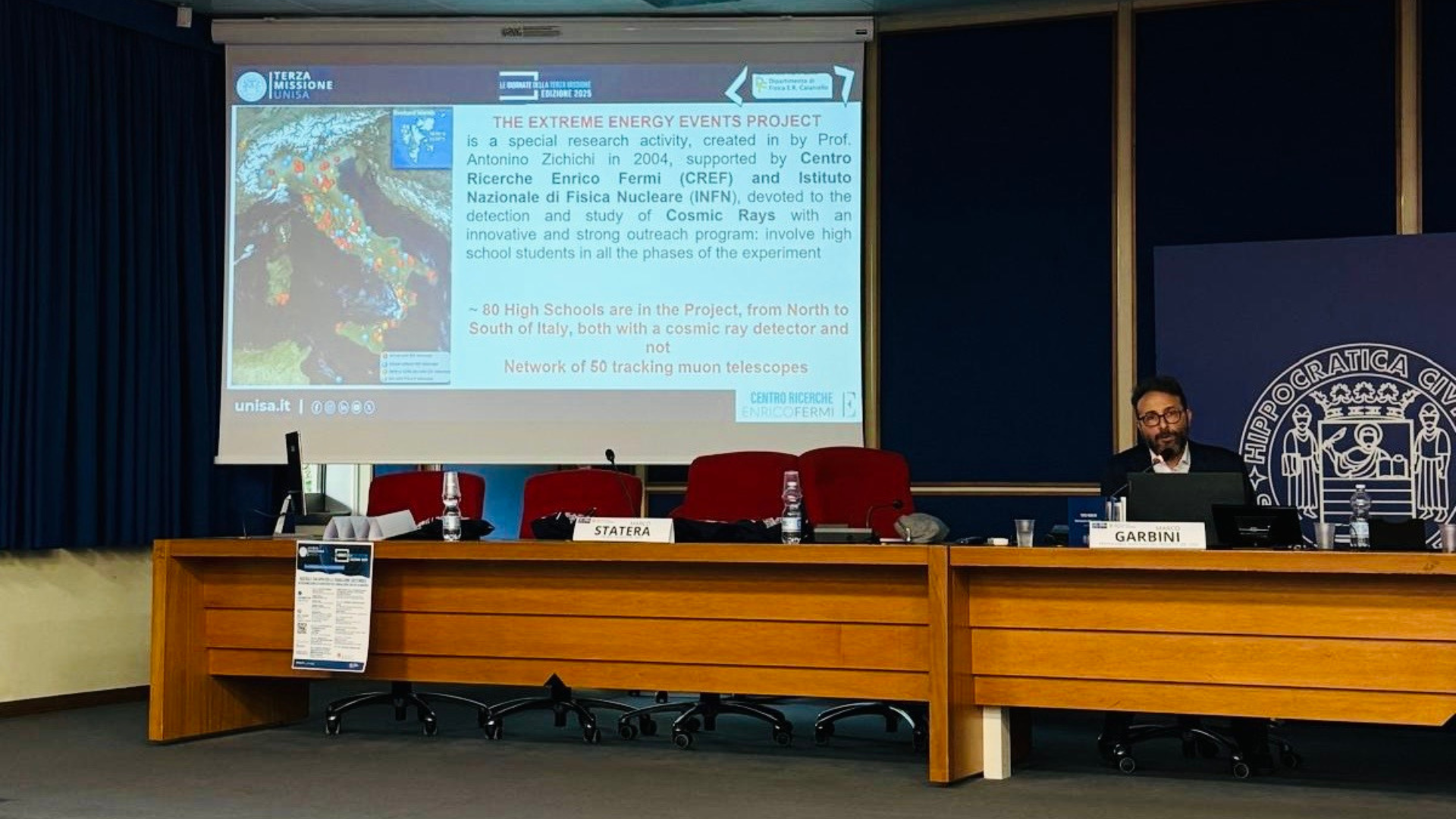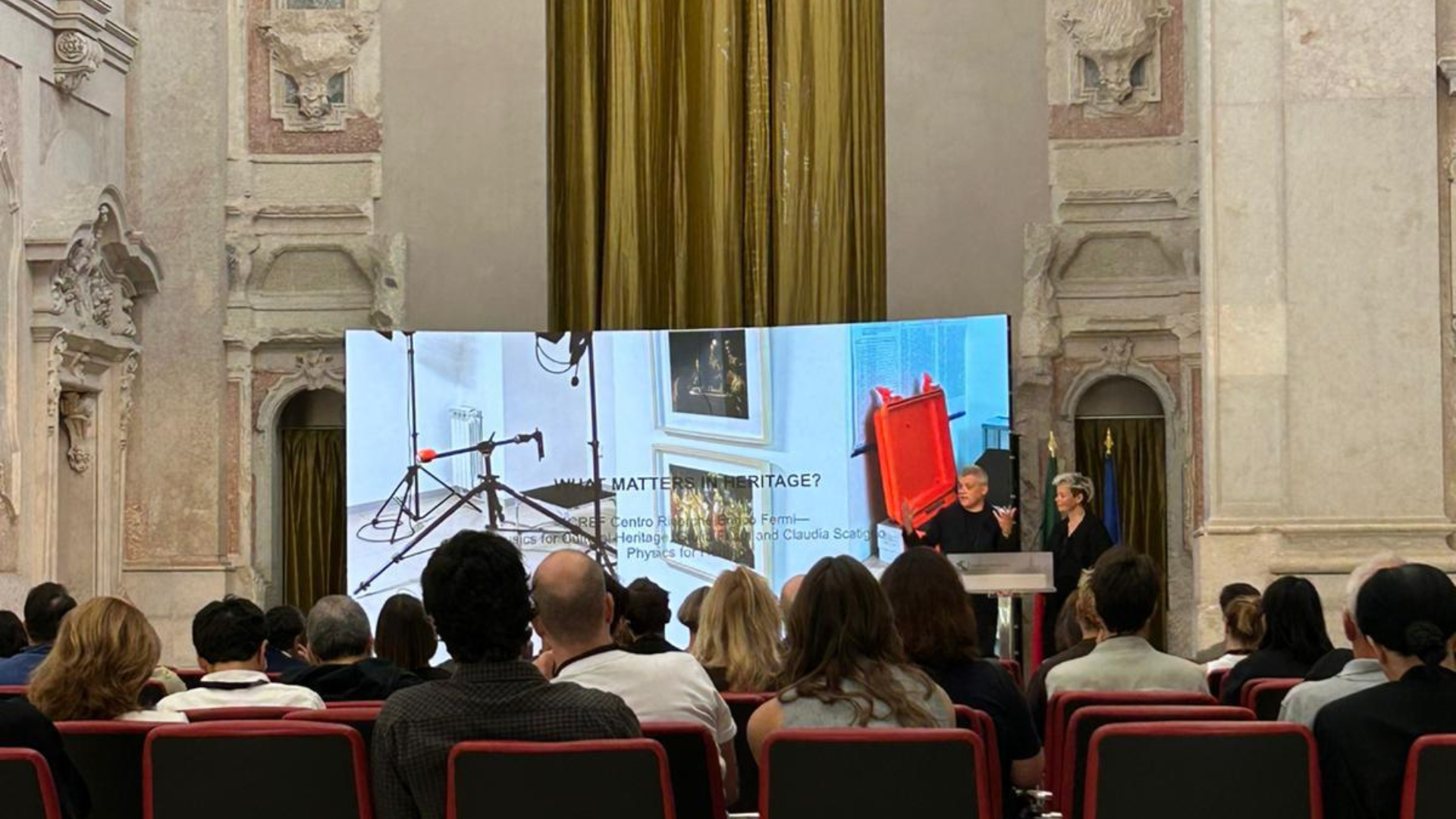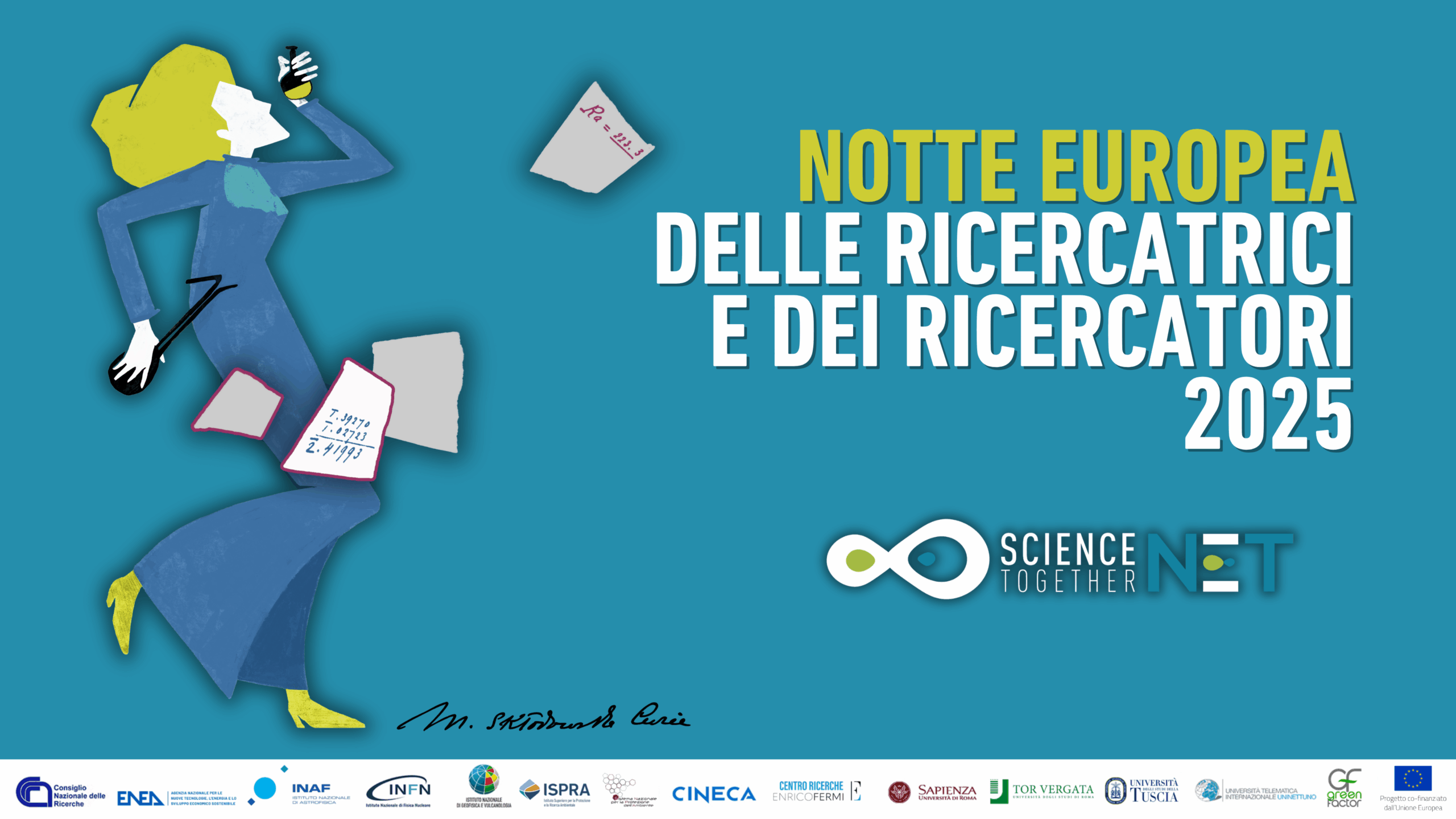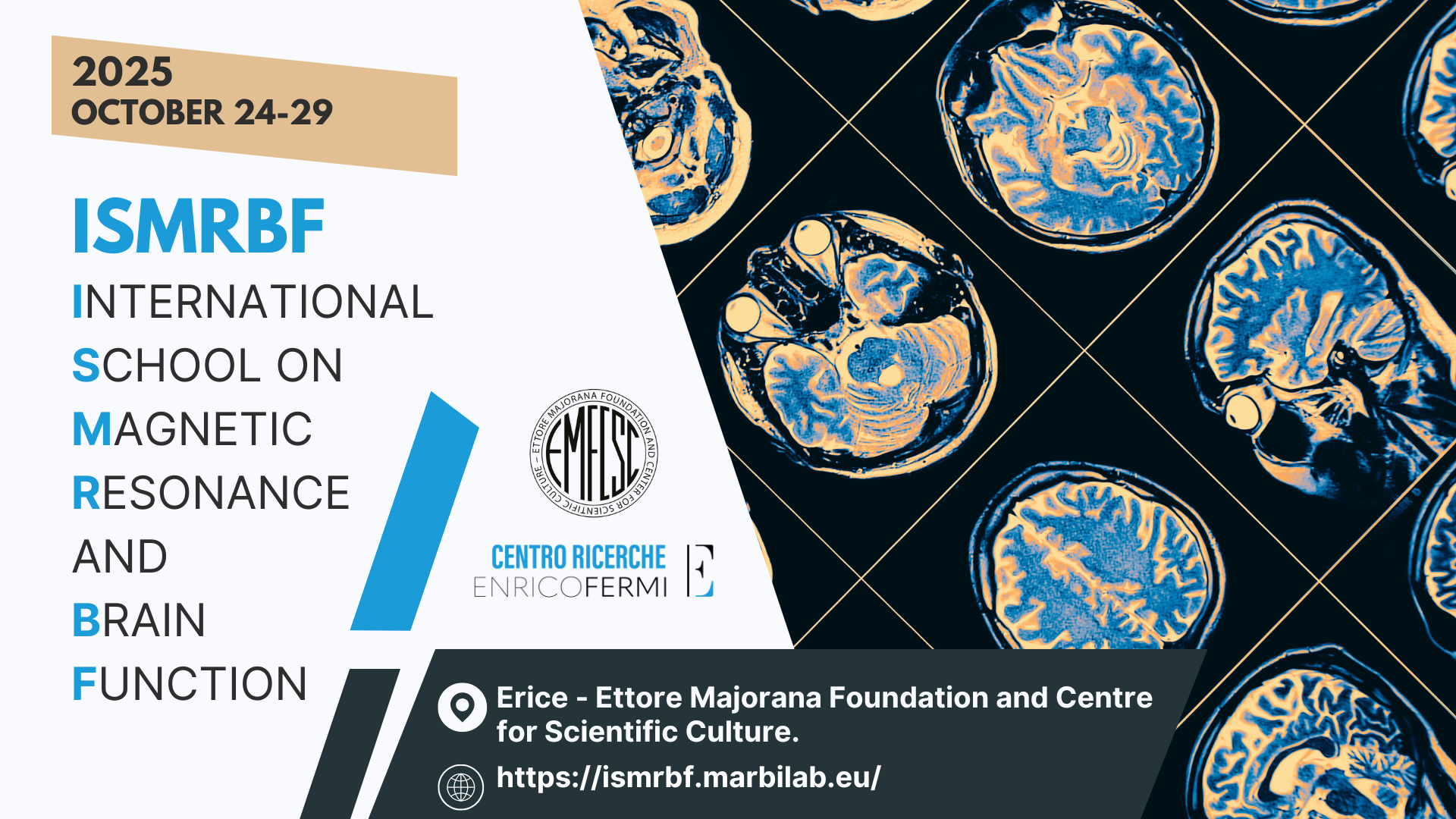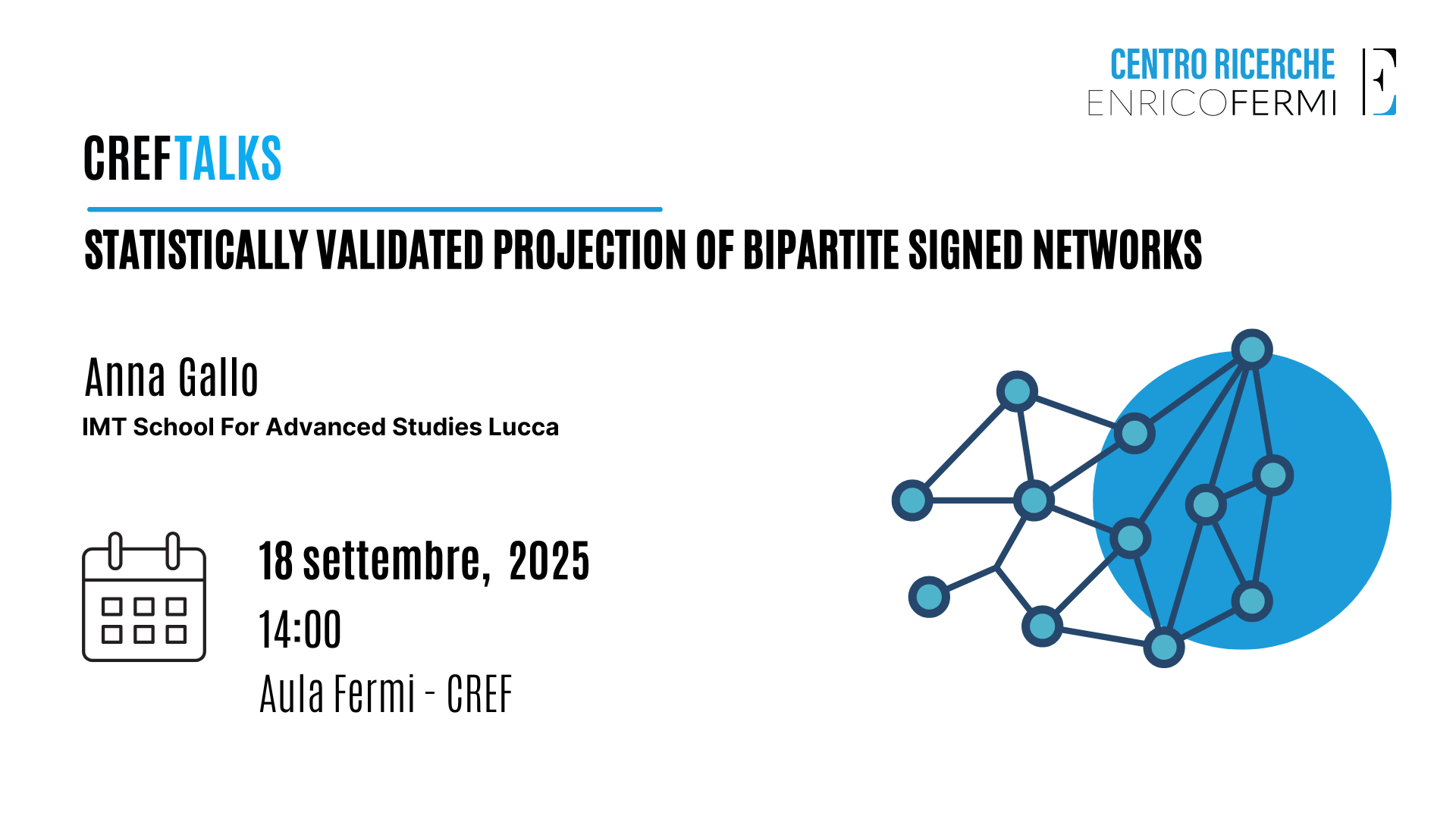



research
The Enrico Fermi Research Center - CREF promotes original and high-impact lines of research, based on physical methods, but with a strong interdisciplinary character and in relation to the main problems of the modern knowledge society.
People
third mission
The CREF was born with a dual soul: a research centre and a historical museum. Its aim is to preserve and disseminate the memory of Enrico Fermi and to promote the dissemination and communication of scientific culture.
news
Publications, news, press review. For interviews, filming, and press contacts, please write to comunicazione@cref.it




research center
_______________________________________
It is an institution with a dual mission: a research centre and a museum for the dissemination of science
scientific activity
_______________________________________
CREF promotes original and high-impact lines of research, based on physical methods, but with a strong interdisciplinary character and in relation to the main problems of the modern knowledge society.
museum itinerary
_______________________________________
The scientific legacy of Enrico Fermi: museum and visit reservations
and news
_______________________________________
News, publications, talks, press release
news and pubblications
news and pubblications
I am convinced that physical science must move towards intense collaboration with other sister sciences and especially with biology. I hope that such a trend, which is emerging today, can benefit both of these sciences
Enrico Fermi, notes written in Stockholm, December 1938
museum
The Fermi Museum preserves and shares the legacy of Enrico Fermi, his research team, and the Royal Physics Institute on Via Panisperna.


